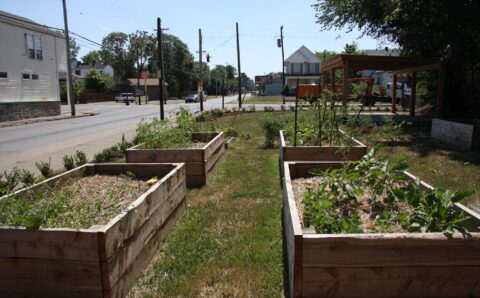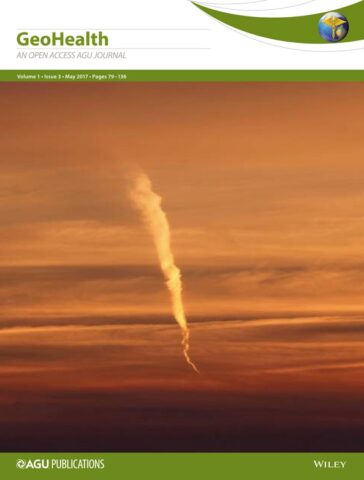Exactly a year ago, AGU announced its entry into the emerging interdisciplinary field of geohealth, starting with a new journal. Under the direction of founding editor, Dr Rita Colwell, the team of founding editors, along with the team at AGU and Wiley, brought this to fruition, with the first issue of GeoHealth published in February 2017. With its broad scope to cover research at the intersection of Earth, ocean and climate and health sciences, the journal has already published a fascinating range of research articles and commentaries. We are now delighted to announce the appointment of Gabriel Filippelli as Editor in Chief to take the journal forward over the next four years. We asked him some questions about his own interests in the field of geohealth as well as what he envisions for the journal.
How has your academic journey brought you to the intersection of geosciences and health?
With an academic training in marine geochemistry and paleoclimate at the University of California, Santa Cruz, it seems surprising even to me that the majority of my current research is in environmental health. My foundation in geochemistry, however, provided me with the nimbleness to pursue a variety of research areas. Indeed, after my dissertation work on the marine phosphorus cycle, I moved up on land to explore chemical weathering processes and the terrestrial phosphorus cycle.
Ultimately, though, it was a student (Mark Laidlaw, now a postdoctoral fellow at Macquarie University in Australia), who finally led me over a decade ago to my current passion in geochemistry and health. Along the way, I have sought out mentors, and have used their advice, support, and friendship to research and publish in journals spanning the geosciences and the medical sciences. I even just began a project in viral hepatitis detection and prevention!
What are some of the areas of research that you are working on at the moment?
The main thrust of my lab’s research at the moment is determining the presence, cycling, and eventual human uptake of lead, a powerfully harmful neurotoxin. Long thought to constitute a public health success story given the phase-out of lead from paint, gasoline, and pipes over 40 years ago, we have recently been snapped back to the reality that over 100 years of lead use leaves a strong legacy, particularly in soils of older cities.
Indeed, soils have acted to absorb and concentrate that lead right near the surface, where we grow gardens, where our children play, and from which lead-contaminated dust blows into homes and onto surfaces on dry days.

This is not only a public health concern but also one with strong undertones of environmental injustice, as the most contaminated areas and the most lead-poisoned children typically are lower income communities of color.
Without a clear understanding of the distribution of exposure rates of lead in communities, this silent burden will continue dragging down the intellectual and economic futures of communities for centuries.
What do you think are some of the most significant global issues being addressed by researchers in the geohealth space?
Perhaps the most compelling global issue revolves around the role that climate change will play on the distribution of temperature, water, species, and disease. We are already seeing clear indications of this impact; for example, with the number of Lyme disease cases increasing in the US by over 300% in the last 15 years, harmful algal blooms running amuck in our waterways, and regional drought and famine causing profound human migrations with substantially disruptive global implications. The signs are all around us that we don’t have to wait and see what will happen.
The future is already here, and we need to be prepared for these changes. Indeed, Indiana University just devoted $55 million in a five-year project to analyze, predict, and prepare for inevitable changes to our environment, with a particular focus on building resiliency into communities and systems. We often view environmental change as only having a “negative” effect, but in fact we need to understand the impacts in an unbiased way to capture the full breadth of geoscience-health interactions.
What is your vision for the GeoHealth journal over the coming years?

AGU finally has a dedicated home for cutting-edge and solutions-oriented research into the health of our globe and the people and organisms that inhabit it.
Founded by the vision of Rita Colwell and supported by the herculean efforts of the Editorial team, I see GeoHealth being the hallmark destination for work that reflects the vastly complicated yet important intersections between the geosciences and the human health sciences.
I would like to see GeoHealth be an interactive, nimble, and perhaps even controversial vehicle for covering challenging issues.
Additionally, I will be building a truly international focus to the GeoHealth team, with a particular emphasis on including research, and researchers, from under-studied and under-supported regions such as Africa and portions of southeast Asia.
The work published in GeoHealth will help guide our way to a healthier and more sustainable future.
Changing climate, growing populations, resource limitations, and global inequity are creating intense pressure to live sustainably on a small planet, while challenging our ability to maintain human health.
The work published in GeoHealth will help guide our way to a healthier and more sustainable future.
—Gabriel Filippelli, Department of Earth Sciences and Center for Urban Health, Indiana University-Purdue University Indianapolis; email: [email protected]
Citation:
Filippelli, G. (2017), Introducing a new editor in chief for GeoHealth, Eos, 98, https://doi.org/10.1029/2018EO078951. Published on 04 August 2017.
Text © 2017. The authors. CC BY-NC-ND 3.0
Except where otherwise noted, images are subject to copyright. Any reuse without express permission from the copyright owner is prohibited.

